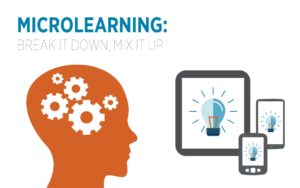
If your cannabis business wants to attract, develop, and retain talent in this generation, they have to adapt to its audience. To quote The Kinks, “give the people want they want”.Microlearning is a way of teaching and delivering content to learners in small, very specific bursts. The learners are in control of what and when they’re learning.
Why has Microlearning blown up recently? (Pardon the pun) To answer this question, you have to take a look at who comprises a majority of learners. By 2025, Millennials alone will make up that 75 percent of the workforce. The average attention span of the Millennial generation is 90 seconds.
The definition of microlearning is easy to guess using only its name, or the common adjective used to describe it: “bite-sized.” But while the words are illustrative enough, they might conceal the short but relatively rich history of microlearning developments, particularly in EdTech.
However, these developments have mostly stemmed from the corporate learning context, which means that, for other educational contexts, microlearning has a long way to go before more educators recognize it as a fully-fledged approach, let alone feel ready to embrace it. Focusing on the developments of microlearning in the cannabis industry, we could think of each new attribute as an evolutionary step of the practice:
- “Bite-sized”: In the beginning, this was all it took for a learning intervention to be considered “micro.” 2-minute games, videos, or large font-sized text with no scrolling was all it took to achieve the designation.
- Compact: Microlearning must make the most of a student’s time. Common elements from more time-consuming media, like elaborate introductions, are short.
- Focused: As organizations start building long repositories of short learning assets, conciseness becomes a priority, as is a proper way to organize and enable access to the items.
- Context-Relevant: As more data about forms of microlearning consumption by learners arises, organizations design interventions under the assumption that real-world practice will soon follow, and the time between lesson and application tends towards zero.
- Instantly Rewarded: Gamification becomes microlearning’s best friend, quickly bringing the student into focus and highlighting how small efforts here and there are accruing into skill acquisition.
It is relatively easy to see how microlearning could be applied to cannabis training using the standard activities and sections. The challenges to implementing microlearning in Moodle are related to the practice more than the technology. This is not to say that technology could not help.
Since microlearning involves turning one section into many, ways to automate cannabis industry training and activity creation and upload are welcome. In any case, even though it is a universally desirable communication skill, teachers are often at odds with conciseness. Let us know what you think.




Responses